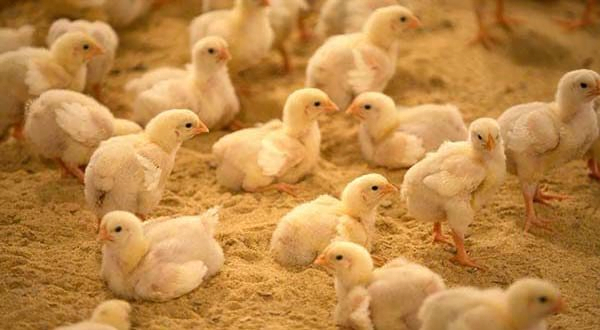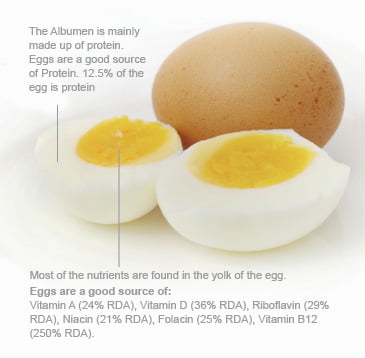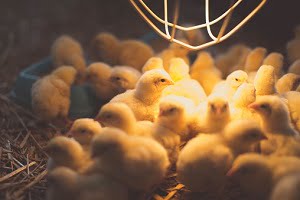SUMMER MANAGEMENT IN LAYERS

Prabakar Ramamoorthy and Bharat Sadarao
Kemin Industries South Asia Pvt. Ltd.
Management Aspects
Farm Management
• Before summer starts, check the working condition of foggers and sprinklers.
• Thatching of roof with paddy straw or sugar cane leaves will reduce temperature inside the shed.
• Apply white lime above the roof top to reflect the light. To prepare white lime, use 10kg limestone, 2kg cement and 20 liters of water.
• Use a drip water system made of gunny cloth on the sides of the shed to reduce the temperature inside by 2-3 °C.
• Provide one-meter overhang to reflect the direct sun and rain into the house.
• Clean the cobweb from side mesh of the shed to increase ventilation inside the shed.
• Keep the ventilator on roof top to remove hot air and gas from shed.
• Providing fresh cool water below 25°C at noon is effective for internal cooling of body (heat sinks) and reducing symptoms of heat stress.
• Cover the exposed water pipelines with gunny cloth to prevent the water getting heat.
• Place about 200 kg of ice in 20,000 liters of water from 12pm to 4pm.
• Flush water from drinker line for 2 to 3 times in summer, till the chillness is felt on palm of the hand.
• Check the nipples for water pressure and adjust the nipple height for birds to drink water easily.
• During peak summer, the fogger should be used based on running time of 2 minutes for every 10 minutes method.This helps to maintain the shed cool and at the same time controls the humidity.
• Electrolyte should be given at 1g/liter of water. It is suggested to give electrolytes in cold water.
• Do not disturb the chickens during the hottest hours of day by adapting work and lighting schedules early morning or at night.
• Avoid having too many birds in a single cage, as it prevents air flow among the birds. This can be achieved by reducing overall stocking density by 10%.
• When humidity is low during daytime, the best method of cooling is evaporative cooling, by using fogger, sprinklers or cooling pad.
• Whereas, in evening time when the humidity is high, increase the air movement using fans, which will reduce heat stress in open house.
• Using fans without evaporative cooling system may be harmful in extreme hot weather, since it is only hot air that is blown into the house.
• Transport the birds during early morning or at night. Place fewer birds in each carrier case and keep empty cases in the truck to make room for ventilation around the birds during transport.
Nutritional Management
• Before the start of summer, choline chloride (60%) at 500g/ton of feed was fed. During summer, the dose should be increased to 1kg/ton of feed.
• In summer, feed should be dense with nutrients by adding 15 – 20% of extra vitamins and minerals to compensate the reduced intake.
• Feed removal prior to the hottest part of day has been shown to be beneficial in reducing mortality.
• Feeding in thelater part of the day ensures enough calcium availability for optimum shell calcification.
• Allow midnight feeding between 11.30 pm to 1am to compensate the reduced feed intake of birds during daytime.
• Crude protein level in feed should not be increased and the protein to be used from a vegetable source only.
• While keeping the protein at same level, amino acids may be increased to compensate the reduced feed intake.
• Deficiency of lysine and arginine increases the heat load in birds. Use of soya, til cake and sunflower helpsin achieving the required arginine and lysine levels in feed.
• Replace 10 to 15% calories (energy) of carbohydrate and protein origin in the feed by addition of 1 – 2 % fats or oil, as their heat increment value is less and gives better cooling effect in the body.
• Similarly, oxidative rancidity of fats and oils in feed will be prevented by addition of antioxidants namely butylated hydroxyanisole (BHA), butylated hydroxytoluene (BHT) and tert-butylhydroquinone (TBHQ), i.e. by using Endox™ T Dry at 80 – 200g/MT of feed.
• Reduce dietary fiber by 1-2 percent, when initial diets are formulated with high fiber content, as it generates considerably more heat compared to carbohydrates during digestion.
• The phosphorous requirement increases during heat stress. An increase of phosphorus up to 5% is appropriate under heat stress conditions.
• The ratio of chloride to sodium in the diet should be maintained between 1:1 and 1.1:1 in hot weather conditions, with a target dietary electrolyte balance (DEB) of about 250 meq/kg.
• Supplementation of vitamin C and chromium through Chromflex™ C Dry at 250g/MT of feed will be beneficial and necessary to maintain integrity of blood vessels and gluconeogenesis.
• The synergistic effect of chromium and vitamin C to combat the heat stress, as chromium helps to improve the blood glucose utilization and prevent mortality due to hyperglycemia. Whereas, vitamin C helps to control the increase in body temperature and plasma corticosterone concentration.
• Immunomodulators like 1,3 beta glucans i.e. Aleta™ at 500 g/MT of feed should be given to prevent the diseases during summer and boost up immunity.
• Betaine at 500g/ton of feed should be given which helps to maintain water balance in body cells against extra cellular osmotic gradient and acts as methyl donor.
• Suppressed growth rate, water consumption, electrolyte balance and eggshell quality can be partially alleviated by the supplementation of sodium bicarbonate (NaHCO3), potassium chloride (KCl) and ammonium chloride (Na4Cl) (2–3 kg/MT of feed) during heat stress.
• Vitamin E captures and neutralizes the free radicals formed in the body, due to excessive oxidative metabolism. However, vitamin E cannot be synthesized in poultry, which must be supplied at 100 to 200 ppm in feed to meet nutritional requirements.
• During heat stress, villi height shortens which leads to less absorptive surface area and resulting in reduced nutrient absorption. Therefore, supplementation of ButiPEARL™ Dry at 300g/MT of feed stimulates the villi growth and serves as primary energy source for intestinal epithelium.
• Supplementation of probiotics like CLOSTAT™ 11 Dry at 500g/MT of feed not only reduces the unfavorable changes in indigenous bacterial microbiota, but also improves the production performance and immunity by restoring the microbial balance and maintaining the natural gut stability during heat stress.
• Dietary supplementation of vitamin A (8,000 IU/kg diet) can also alleviate the detrimental effect of heat stress on egg production induced by immune challenge.
• Vitamin K supplementation is recommended particularly at the time of debeaking or during the threat of coccidiosis due to prolonged blood clotting time in heat stress.
• Wet feed in summer and longer storage of feed invites rapid growth of mold and toxin formation. Good quality toxin binders like TOXFIN™ 300 Dry at 1kg/MT should be used in feed.
Health Management
• Before summer starts, Newcastle Disease (ND) killed vaccine must be given. After summer, ND killed vaccine or ND live vaccine must be given.
• The summer stress conditions invade the problem of Mycloplasma gallisepticum (MG) by reducing the immune system and allowing many other opportunistic invaders to attack the birds, which are E. coli, Viscerotropic Velogenic Newcastle Disease (VVND), avian influenza, infectious coryza, fowl cholera, etc.
• Apart from this, diseases like infectious bronchitis (IB), coccidiosis and factors like wet litter, climate and nutritional changes, etc. allow the MG to become more active.
• Also, migration of birds during climate change would certainly influence the avian influenza (AI) virus transmission cycle and directly affect virus survival outside the host.
• The most effective method of preventing the problem from the source is to boost the immunity in birds by the way of supplementing immunostimulants (Aleta™), regular vaccination for IB, effective coccidiosis programs, good biosecurity and sanitation.
• Regular sanitization and acidification of drinking water with AcidLAC™ W Liquid at 1ml/4 litres of water and periodic cleaning of water tanks is necessary, since the undergoing water level increases the bacterial counts in water during summer (mainly E. coli& chronic respiratory disease [CRD]).
• In summer, increased intake and excretion of water by birds lead to wet litter condition and ammonia production. Hence, it is important to include ammonia binder like BioCURB® Dry at 200g/MT of feed, which will reduce ammonia production by proper degradation of protein and help in maintaining litter dry.
• Maintain strict cold chain during transport, storage and administration of vaccines.
• Do not withhold drinking water from the flock when vaccine is provided through drinking water.
• Adjust the amount of medications and volumes of water used for water vaccination to reflect the increase in water consumption of the flock during hot weather.
• Vaccination should be carried out during cool hours as infectious bronchitis and related vaccines are particularly heat sensitive and vaccination response will be affected.
• At high temperatures, there may be rapid evaporation of disinfectant solution resulting in less contact time. So, appropriate disinfection program is to be followed between the batches and on farm.
• Ensure proper disposable of dead birds (6 ft diameter and 6 ft depth for 10,000 birds).



